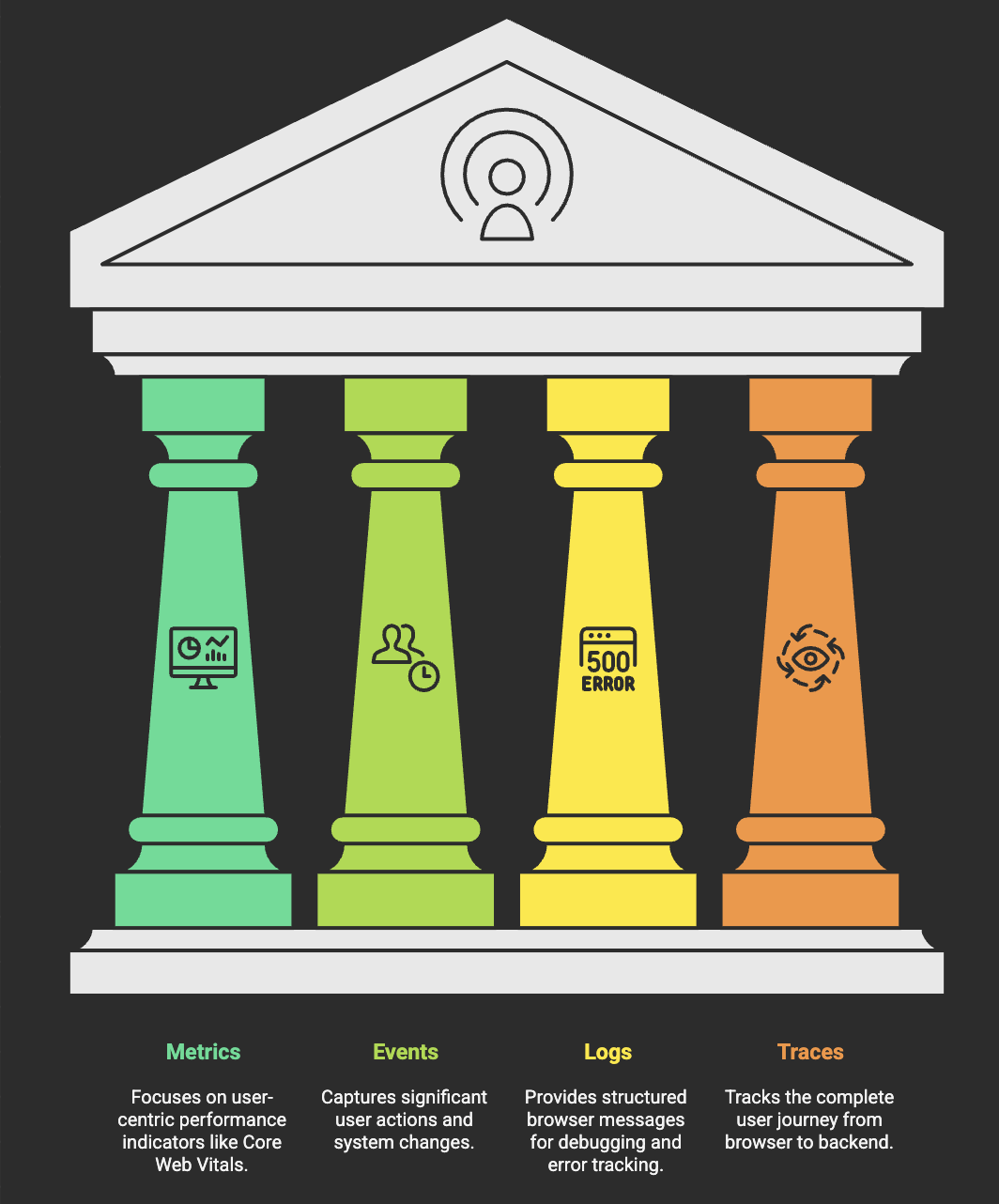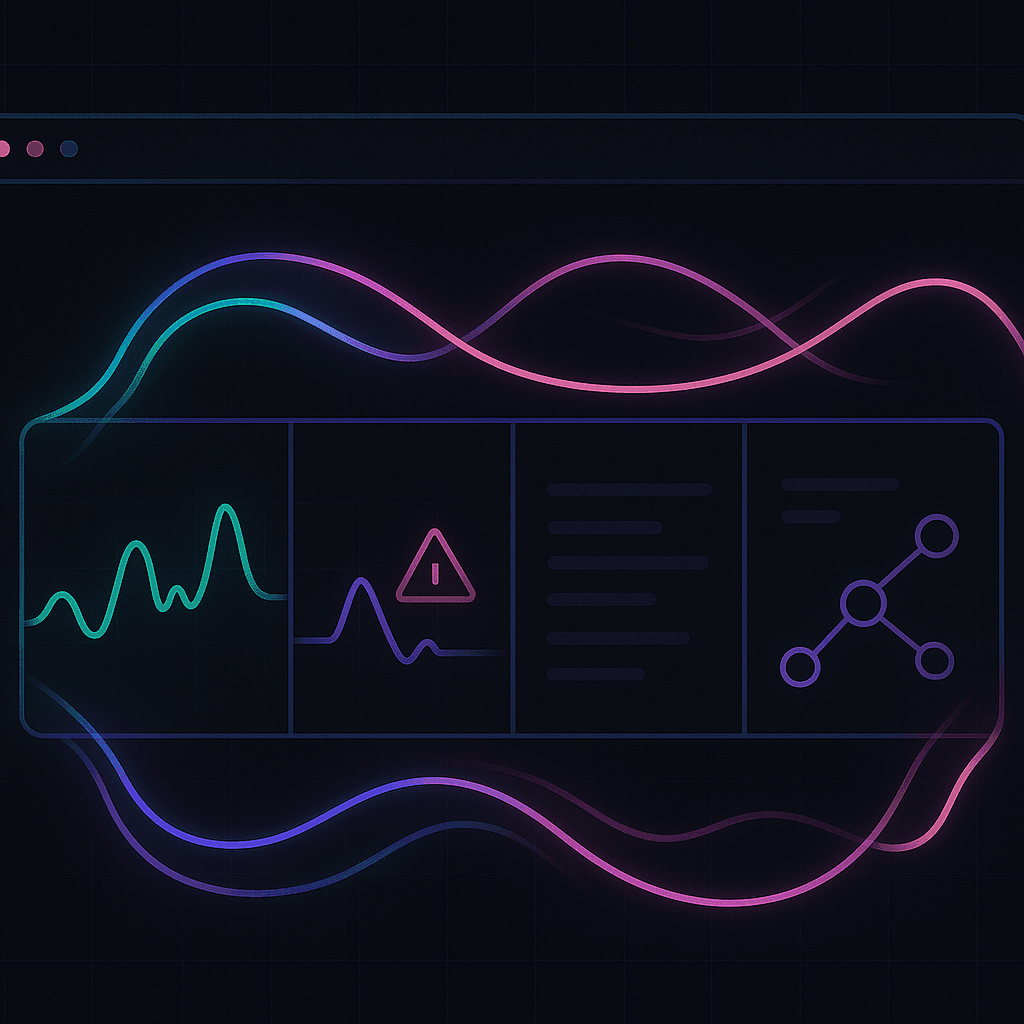In the multiverse of debugging, backend observability is Doctor Strange - powerful, mystical, and often the one saving the world. But without the frontend, it’s like forgetting Spider-Man was standing right there on the battlefield.
Introduction
We have spent years tuning our backend: monitoring CPU and memory, tracing requests between services, and wrangling logs. However, here's the thing: none of that matters if your website feels sluggish to people who are actually using it. Everyone talks about backend performance, but from the user’s point of view, the experience is all about what happens in their browser. If the frontend lags or stutters, they won’t stick around, no matter how slick your backend technology is.
This is where frontend observability shines. It completes your MELT stack (Metrics, Events, Logs, and Traces) by bringing visibility into the user’s last mile - the part they actually touch.
What is Frontend Observability?
It’s a way to see what your users actually experience - how quickly things load, where they get stuck, and what went wrong for them specifically, so you can fix what matters most. Consider it as turning on the lights for the “last mile” of your product - the part your customers actually touch.
Frontend in the MELT Stack
When people talk about the MELT stack it’s usually in the context of servers and infrastructure. But the frontend brings these pillars to life in a completely different way:

Metrics: aren’t just about CPU and memory anymore. Think Core Web Vitals, the lag users actually feel, or how long APIs take from the browser’s point of view.
Events: could be anything from ‘User clicked checkout’ to a feature flag getting flipped. It’s the stuff that really matters to the user’s journey.
Logs: on the frontend are often structured browser messages like, Adding to cart failed with a 500 error or even just custom debug information when something feels off.
Traces: now tell the whole story, starting with a button click in the browser, flowing through APIs and databases, and looping back to what the user sees.
The front end isn’t just another data source. It’s the entry point of your traces and the ground truth of your user experience. If you miss what’s happening here, the rest doesn’t really matter.
Why Frontend Observability Matters
-
Fix the Right Things, Faster: Backend graphs might tell you “login API slowed down.” Frontend observability tells you who felt it like “Chrome users in India on 4G saw a two-second delay after we shipped yesterday.” That’s how you stop guessing and start shipping targeted fixes.
-
Protect Conversion and Retention: Analytics can tell you that conversion dropped. Frontend observability helps explain why which step got slower, which device struggled, which release introduced the isse
-
Ship with Confidence When you launch, you want an answer to one question: “Did this change make things better for users?”. Frontend signals make that visible within minutes, not weeks.
-
Crete Shared Truth Across Teams Product, frontend, backend, SRE everyone sees the same user journey. No more “works on my machine” or finger-pointing. You’re all looking at the same customer reality.
Myths vs Reality
| Myth | Reality |
|---|---|
| “Isn’t this just error tracking?” | Error tracking shows the crash. Observability shows the whole movie - what led up to it, who it affected, and how it felt. |
| “We already have analytics.” | Analytics explains what users did. Observability explains how it behaved for them. |
| “Won’t this slow the app?” | Done right, signals are lightweight, batched, and sampled. The goal is to reduce user pain, not add to it. |
| “Sounds expensive.” | Start small. Capture the few signals that move business metrics, and grow from there. |
Challenges in Frontend Observability
Frontend observability is tricky because browsers are ephemeral, sessions come and go. Collecting too much can hurt performance (nobody wants observability that makes the site slower). Log schemas must be minimal, structured, and aligned with backend signals.
Frontend Observability with Parseable
At Parseable, we believe in logs-first observability that scales - from backend to browser. The same log architecture that handles terabytes of telemetry data daily can now unify frontend events and browser logs at scale.
Imagine this:
- High-throughput browser events streaming straight into Parseable
- Unified schema linking frontend logs with backend traces
- Dashboards where frontend errors sit right beside API metrics
That’s when the MELT stack becomes truly complete.
Closing Thoughts
Frontend observability isn’t a “nice to have” - it’s the missing half of the story.
Without it, you’re like Batman solving crimes without Alfred’s help.
By demystifying the frontend and integrating it into MELT, we move from monitoring systems to understanding experiences - and ultimately, that’s what users care about.

